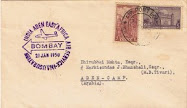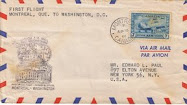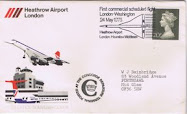Before resuming the story of Zeppelins I will divert to other airship pioneers of early twentieth century.
Stamp honoring Savero issued by Brazil in 1929
Another Brazilian who was also fascinated with the airship was Augusto Savero born in the Rio Grande region of Brazil in 1864. He studied the non-rigid airships of Santos-Dumont and the rigid airship of Count Zeppelin and opted on designing a semi-rigid airship with light scaffolding of treliça. His first lighter-that-the-airship was baptized the “Bartolomeu de Gusmão” and, carried to Brazil. However, the airship has several defects and failed to fly. He then worked on his next airship the "PAX". On12th May 1902 Augustus Severo took off with its mechanic, Saché. But, at a height of 400 meters an explosion occurred and the “PAX” fell on the avenue of the Meine killing both pilots.
The PAX on a Brazilian stamp issued in 1929
At the same time, two brothers Paul and Pierre Lebaudy, owners of a sugar refinery, built semi-rigid airships with the assistance of their engineer Henri Julliot as designer,. Their airships were used by the French, the Russian and the Austrian armies. They constructed an airship hangar at Moisson, near the River Seine downstream from Paris and developed airships in the first decade of the twentieth century.
The brothers Lebaudy & their airship can be seen on a Cuban stamp issued in 1902.
Stamp issued by St. Thomas & Prince Islands depicting the airship Le Jeune at mooring pad
Their first airship Le Jaune first flew in October 1902 and passed the test of endurance flying 98 km. in 2.75 hrs. Refitted with a new hull, the airship made 12 ascents but was carried away by a storm on Aug. 28, 1904, and badly damaged. It was repaired and rebuilt a couple of times before being sold to the French Army for Frs.80,000 in December 1905. The brothers built about 20 airships till 1912.
.
The "La Ville de Paris" was the largest airship built in 1904, being 201 feet long with a maximum diameter of 35 feet. It was constructed by Mr. Edward Surcouf and was the property of M. Deutsch de la Meurthe. The Propelling power was a 70 h.p. Chenu motor, and a peculiarity of its construction were the eight supplementary gas envelopes fitted at the stern for purposes of steadiness.
A Bhutan stamp depicting the Ville de Paris to commemorate the 200th anniversary of Balloon Flight
A tuck's postcard showing the Ville de Paris over Bournemouth
Another pioneer of note was the German airship designer.August von Parseval (1861- 1942) . He was interested in aeronautics and came in contact with Rudolf Hans Bartsch von Sigsfeld, with whom he developed balloons used by the military for observation. In 1901 Parseval and Sigsfeld began building a dirigible airship. However , the work was interrupted until 1905 , after Sigsfeld's death during a free balloon landing in 1902, By 1905.thanks to improvements in motor design, an appropriate engine was available. Paeseval's designs were licenced to the British Vickers company. 22 Parseval airships (both non-rigid (blimps) and semi-rigid (with keels)) were built up to the end of the First World War,. In the late twenties and early thirties, four more semi-rigid airships were built in accordance with the "Parseval-Naatz principle".
Stamp depicting Parseval and his airship issued by Cuba in 2000

















2 comments:
Very informative article with lots of illustrations .
great post thanks
Post a Comment